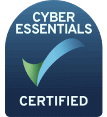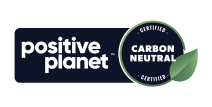The benefits of taxonomy management are indisputable. For example, combining structured taxonomy with text mining functionality enables machines to understand how enterprise-level data is related and organised. As a result, further information relevant to a user’s information journey can be suggested.
Applying this functionality to enterprise SEO strategy is in direct agreement with the upcoming delivery of Google’s Search Generative Experience (SGE), which uses generative AI to create responses to search queries and suggest follow-up questions.
By creating a highly structured taxonomy with effective content tagging, enterprise sites will be set up to leverage their data to work in tandem with SGE as their content will be available at both the initial and subsequent touchpoints of a user’s information journey.
Now is the time to begin creating effective taxonomies – that’s because Gartner predicted in its 2019 report that ‘by 2024, companies using graphs and semantic approaches for natural language technology projects will have 75% less AI technical debt than those that don’t.’
Enterprise SEOs facing an unorganised maelstrom of data may want to pull their hair out at the thought of structuring and tagging content for taxonomy management. However, there are tools out there which can automate these processes at scale. Here, we explore what each one can offer you.
Taxonomy Management
1. Expert AI – Taxonomy management powered by AI
Creating and managing effective taxonomies is made much easier with Expert.AI. This platform allows enterprise SEOs to perform tasks such as collecting and organising content, analysing content at scale for SEO value, creating and managing taxonomies and managing taxonomy performance.
By pulling in content from your company sources, such as websites, documents and social media, this platform will make it easier for SEOs to find and use the most relevant content. The tool will also identify the keywords, phrases and topics that are most relevant to your target audience.
If getting key stakeholders to sign off on spending time manually building an effective taxonomy is proving impossible, use a tool like Expert AI to build out the most efficient taxonomy for your enterprise site and hand your colleagues a convenient, streamlined overview for their consideration.
Once you’ve got sign-off, you can use the tool to create terms, assign terms to content and organise terms into hierarchies. From there, you can track taxonomy performance, including number of site visitors, pageviews and keywords searched for – allowing for focused reporting that senior management will love to see.
2. Data Harmony – Flexible topic modelling for effective taxonomies
Accurate taxonomy creation is a doddle if you sign up for Data Harmony. This automation tool allows SEOs to create efficient taxonomies by making use of AI to analyse content. It operates more of a traditional model, allowing you to seamlessly collaborate with other team members by providing a centralised platform for taxonomy management.
This tool is capable of crawling sites to collect content, processing documents to the same end and analysing for SEO value. It uses natural language processing, semantic analysis and topic modelling to identify content which will rank well in the SERPs.
Key features SEOs can benefit from include creating terms for your site taxonomy, organising these terms into a site hierarchy and defining the relationships between terms. Taxonomy performance is also trackable, as Data Harmony makes use of web analytics, content analytics and search analytics.
3. Top Quadrant – Knowledge graph management at scale
This tool enables SEOs to create enterprise knowledge graphs – flexible data constructions which allow for easy analysis of the relationships between data. Using a relational database limits discovery capabilities, so using a knowledge graph allows for informed data modelling that will result in enhanced search ranking potential.
TopQuadrant allows organisations to analyse their data quickly and intelligently, classifying it and deciding how it should best be used. The company makes use of many partnerships and APIs to build better data classification systems at scale.
This platform offers SEOs the ability to adopt a semantic data catalogue to take their enterprise strategy to the next level. Data silos can be connected, with data lineage traceable across all business systems. Plus, business and technical stakeholders can easily align on the impact of proposed data changes and make more effective strategic decisions.
Content Tagging
4. Megaputer – Text analysis for structured data creation
This tool allows you to dig into content tagging at scale. It identifies keywords, phrases and topics, automatically using them to tag content. The software performs this function by using semantic analysis to understand content meaning and using these insights for tagging.
SEOs can also use manual tagging capabilities if they are dealing with content which contains highly technical terms or industry jargon which automatic tagging functionality would struggle with.
Overall, Megaputer uses text analysis to help enterprise operations perform tasks such as document clustering using Latent Semantic Analysis, text classification, named entity recognition and relation extraction. Key stakeholders can be assured that unstructured text is being transformed into structured data.
SEOs can then use this data to optimise content at scale for their target audiences, improving reach and maximising conversions.
5. Smartlogic – Using semantic AI to improve search capability
Smartlogic makes use of a semantic AI platform called Semaphore, which helps organisations to manage data, improve search capabilities and automate their workflows. SEOs can house structured, unstructured and semi-structured data in a centralised location and classify at scale for effective content tagging and taxonomy creation.
By using semantic AI, Semaphore is able to understand the meaning of data and classify it in a more efficient and accurate way. Stakeholders will appreciate the potential to save time and resources, saving on labour costs. SEOs can benefit from automated classification and tagging which can easily be applied to new and improved site taxonomies.
Instead of assigning hundreds of hours of manual tagging time, tools like Semaphore allow for content to be tagged for SEO benefits such as search functionality and improved indexing at scale.
6. PoolParty – Stop using spreadsheets, start automating structured knowledge systems
It’s likely that enterprise data classification processes involve trawling through manually created spreadsheet databases on a fairly inconsistent basis. Even when Excel-based taxonomies are managed regularly, changes can take a long time to implement. At this point, it should go without saying that effective taxonomy management leads to improved user search as complex queries can be catered to.
PoolParty uses a collaborative interface to create controlled vocabularies, agile data models and intelligent search structures. Departments can work seamlessly to group together synonymous terms and concepts under a single umbrella definition – and go a step further by relating it to other concepts, building out a network of vocabulary relationships which will reduce confusion during complex searches and avoid the risk of useful content being hidden in enterprise sites.
The software helps companies to create intelligently structured taxonomies which use text mining functionality to help machines understand connections and hierarchies, allowing for swathes of useful information to be uncovered for users embarking on extensive informational journeys.
Need more help with site structure?
Skittle Digital have a wealth of experience in managing complex site architecture and content taxonomies. For help with yours, book in for a Free Acquisitions Workshop, where you will receive free, expert advice, resources, and a personalised action plan, tailored to your businesses concerns and how they can be improved.












